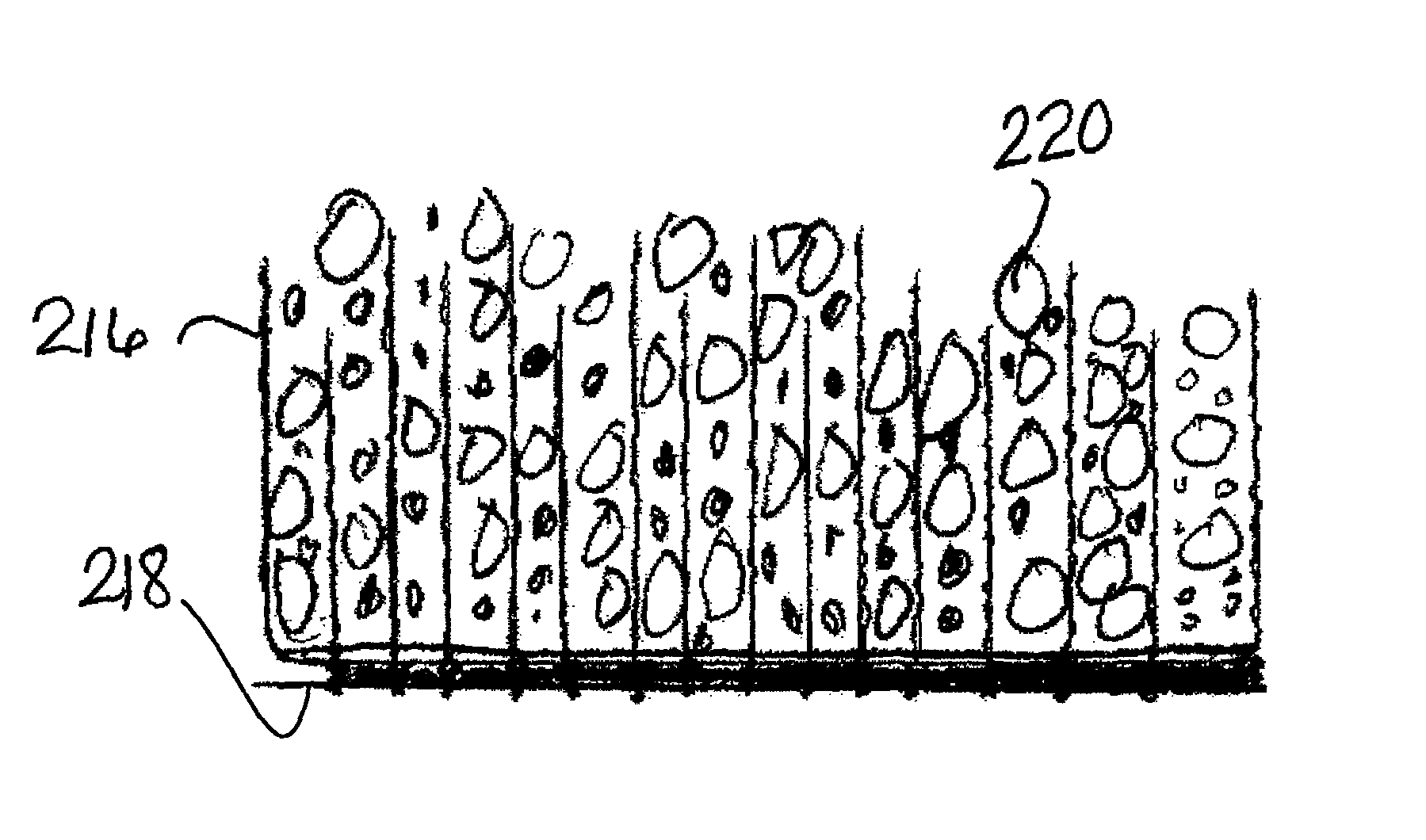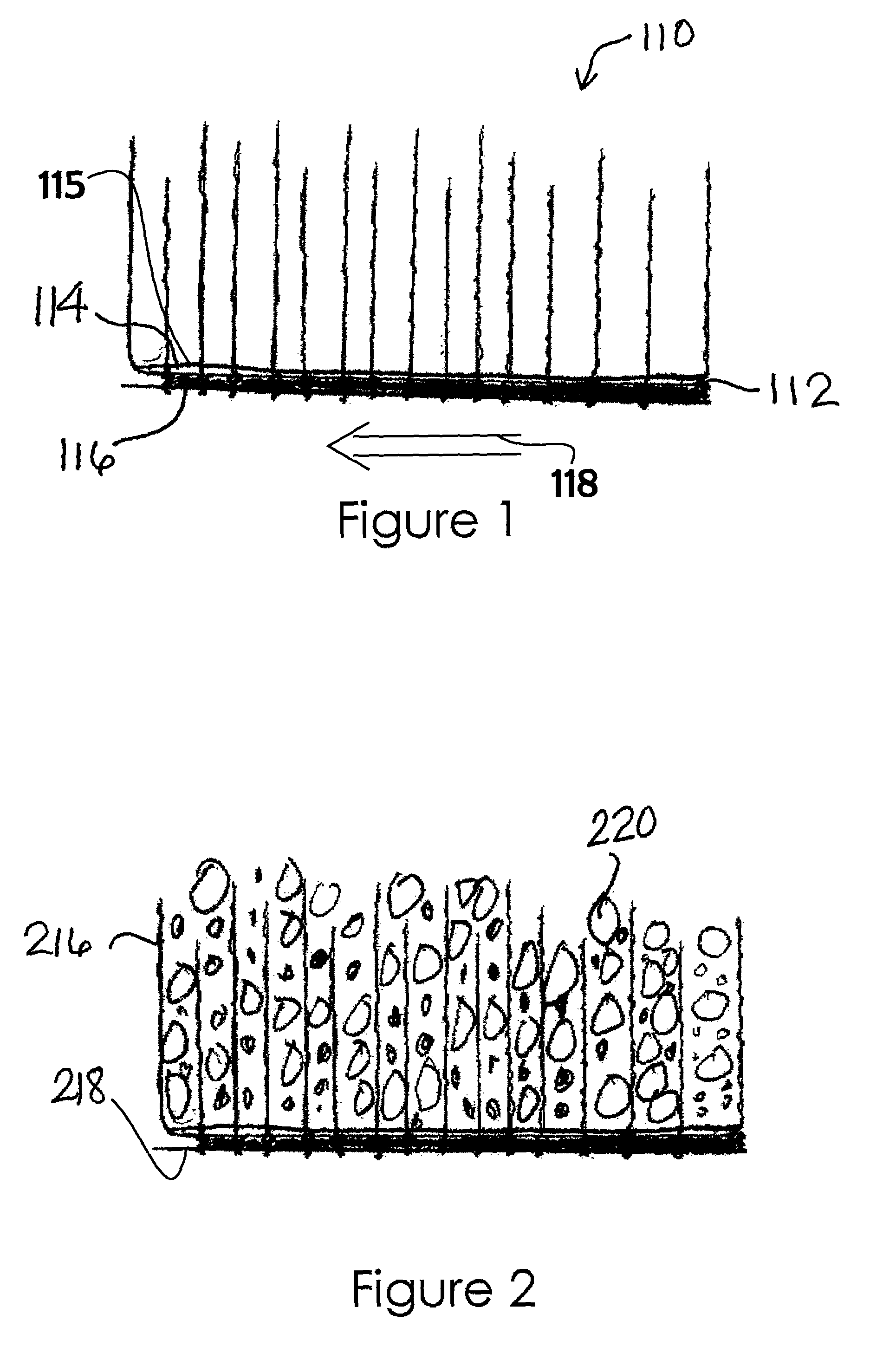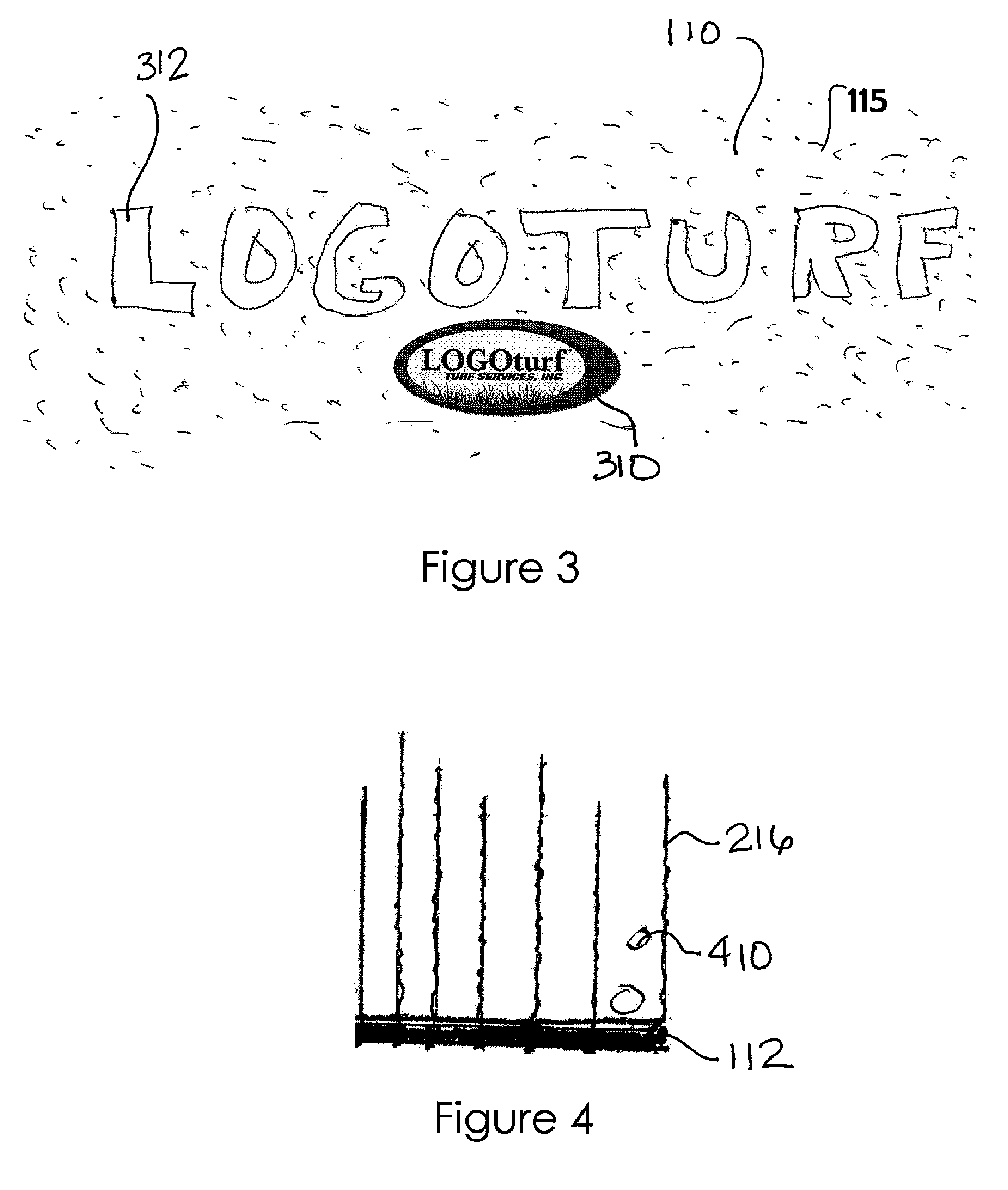Geosynthetic tufted drain barrier
a technology of tufted drain and drain barrier, which is applied in the field of geosynthetic tufted drain barrier, can solve the problems of destabilizing the system, affecting the proper design of geosynthetically-lined structures, and affecting the egress of undesirable fluids, so as to achieve the effect of egressing undesirable fluids in tim
- Summary
- Abstract
- Description
- Claims
- Application Information
AI Technical Summary
Benefits of technology
Problems solved by technology
Method used
Image
Examples
Embodiment Construction
[0033]The present invention is a geosynthetic tufted drain barrier for preventing vertical migration of fluids. On a membrane is disposed a substantially impermeable layer or anchor backing. The substantially impermeable layer can be woven or non-woven. A plurality of tufted tensile elements is attached and forms a part of the substantially impermeable layer in aligned or offset rows. Infill material chosen from the group: sand, stone, rubber, slag, recycled concrete, recycled glass, and expansive minerals, or combinations thereof can be introduced to the tufted tensile elements. The structure consists of combining a liner, vertical or tufted tensile elements, and a natural or recycled uniformly graded, granular-based drainage system to allow for surface water collection and removal while maintaining slope stability of the drainage layer.
[0034]Referring now to FIG. 1, there is shown a GTDB 110 of the invention. Liner 112 consists of a substantially impermeable layer 114 having upper...
PUM
 Login to View More
Login to View More Abstract
Description
Claims
Application Information
 Login to View More
Login to View More - R&D
- Intellectual Property
- Life Sciences
- Materials
- Tech Scout
- Unparalleled Data Quality
- Higher Quality Content
- 60% Fewer Hallucinations
Browse by: Latest US Patents, China's latest patents, Technical Efficacy Thesaurus, Application Domain, Technology Topic, Popular Technical Reports.
© 2025 PatSnap. All rights reserved.Legal|Privacy policy|Modern Slavery Act Transparency Statement|Sitemap|About US| Contact US: help@patsnap.com



